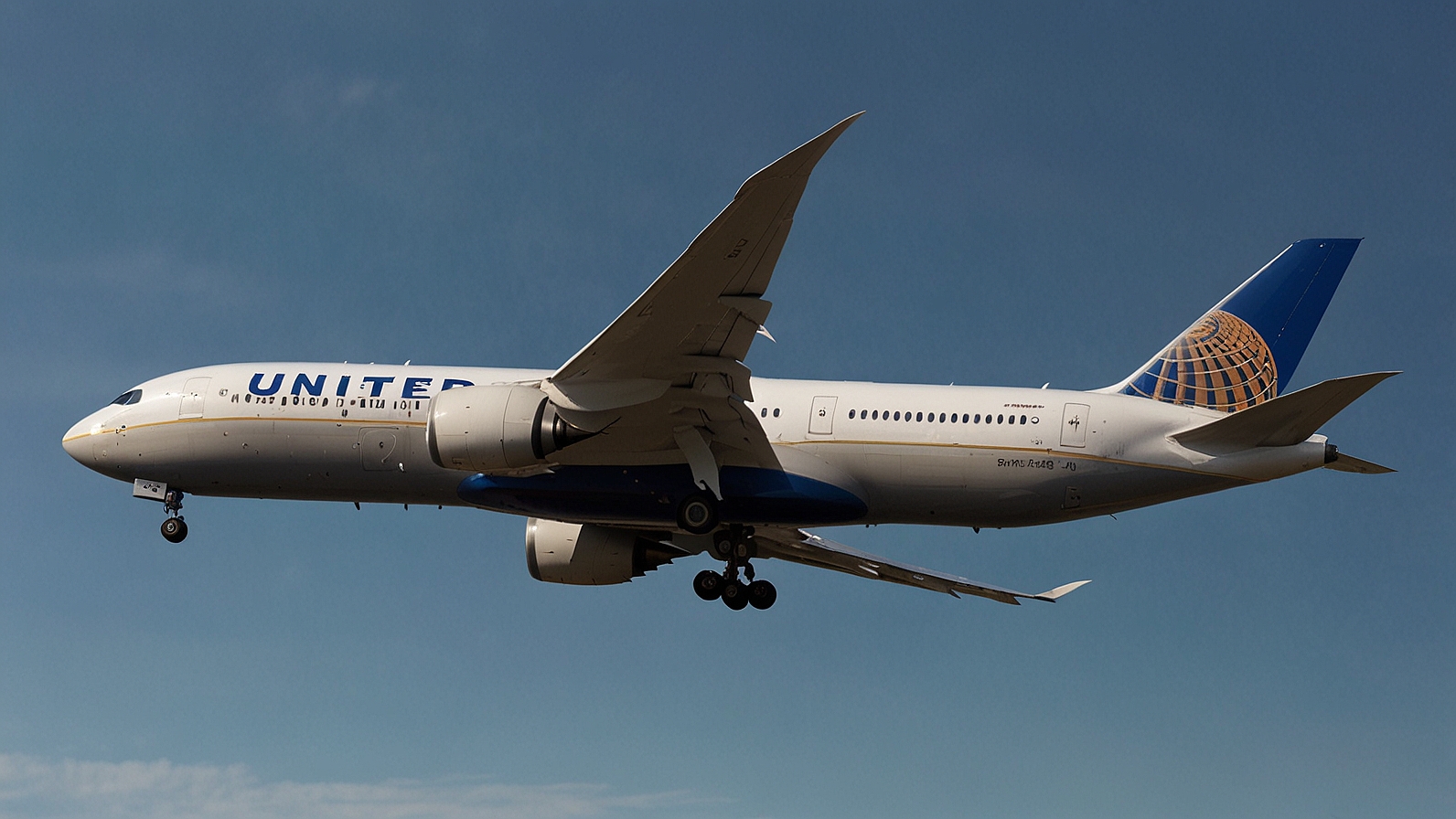What goes through a pilot’s mind when a master warning light flashes and an alarm sounds at 35,000 feet? For the crew of United Airlines Flight UA770, it wasn’t panic—it was procedure. Their world instantly narrowed to checklists, communication, and a single, unwavering goal: getting everyone on the ground safely. This incident wasn’t a Hollywood disaster movie; it was a real-world demonstration of why modern air travel is so incredibly safe.
The United Airlines Flight UA770 emergency diversion on a routine transatlantic journey is a powerful story. But it’s not a story of failure or danger. It’s a story of success. It’s a case study in how rigorous training, advanced technology, and a safety-first culture combine to handle an abnormal situation exactly as designed. Let’s pull back the curtain on what really happened and why this event should make you feel more confident, not less, about flying.
On a seemingly normal day, United Airlines Flight UA770 was cruising smoothly. The aircraft, a wide-body Boeing 787 Dreamliner, is one of the most advanced in the sky, packed with sophisticated systems designed to protect its passengers. But even the best technology needs human expertise.
Mid-flight, the cockpit’s advanced monitoring systems detected an anomaly. An automated alert, specifically a pressurization warning, illuminated. This isn’t a trivial alarm; the pressurization system is what keeps the cabin atmosphere comfortable and breathable at high altitudes.
Here’s a breakdown of the key events in the sequence:
- The Trigger: An automated pressurization warning activated in the cockpit.
- The Immediate Response: The highly trained flight crew did not dismiss it. They immediately commenced standard abnormal and emergency procedures.
- The Decision: Following their training and protocols, the pilots made the decisive choice to divert the aircraft.
- The Execution: They turned towards the nearest suitable airport, which was Shannon Airport (EINN) in Ireland—a facility well-equipped to handle wide-body jets and their needs.
- The Outcome: The aircraft landed safely without incident. No injuries were reported among the 200 passengers and crew on board.
This swift and by-the-book response turned a potential risk into a managed, safe conclusion.
You might be wondering, “Why did they divert for just a warning light?” Think of it like the check engine light in your car, but with far higher stakes. At cruising altitude, the air outside is too thin to breathe. The aircraft’s pressurization system acts like an invisible shield, maintaining a safe and comfortable cabin environment.
A potential pressurization failure is treated with the utmost seriousness because it could lead to:
- Hypoxia: A dangerous state of oxygen deprivation that can impair judgment for both passengers and crew.
- Rapid Decompression: A sudden loss of cabin pressure, while rare, would require an emergency descent, which itself carries risks if not handled perfectly.
The crew of UA770 didn’t wait to find out if the warning was a minor sensor glitch or a genuine mechanical issue. They treated it as a real abnormality. This “better safe than sorry” philosophy is drilled into every airline crew member from day one of their training.
The context provided describes this event as a “textbook safety-first diversion.” What does that mean? Let’s break down the components that made it so.
Modern aviation doesn’t rely on a single “hero” pilot. It relies on a team. The Captain and First Officer would have worked together seamlessly—one flying the aircraft while the other ran the checklists and communicated with air traffic control. They almost certainly also involved the senior flight attendant in the loop, preparing the cabin crew for a potential diversion without causing alarm.
Not every airport can handle a Boeing 787. The crew didn’t just pick the closest dot on the map; they chose a major international airport with:
- Long enough runways for a heavy aircraft.
- Full emergency services (fire, medical) on standby.
- The necessary ground infrastructure and United Airlines support to handle the aircraft and passengers after landing.
This strategic decision minimized risk and maximized support.
A silent cockpit is a worrying cockpit. From the moment the alarm sounded, the crew was talking—to each other, to air traffic control, and eventually to the passengers. Clear, calm communication is the glue that holds a safe outcome together.
While the pilots managed the jet, the flight attendants were preparing the cabin. Their training ensures that even during an unscheduled landing, order is maintained, and passengers are informed and reassured, preventing panic.
It’s worth taking a moment to appreciate the machine itself. The Boeing 787 Dreamliner is packed with diagnostics and redundancy. The very fact that it can detect a potential pressurization issue and alert the crew before it becomes an emergency is a huge safety win. The aircraft gave the crew the information and time they needed to make a smart decision.
The plane lands safely. The passengers disembark. Now what? The story isn’t over. This is where the next critical phase begins: confirming the aircraft’s airworthiness.
United Airlines maintenance teams swing into action. The diverted aircraft isn’t going anywhere until they sign off on it. The process looks something like this:
- Initial Inspection: Engineers download data from the aircraft’s flight data recorders and maintenance systems to understand exactly what triggered the warning.
- Troubleshooting: They follow detailed technical manuals provided by Boeing to diagnose the root cause. Was it a faulty sensor? A software glitch? A minor leak?
- Repairs: Any faulty components are repaired or replaced with new, certified parts.
- Testing: The system is rigorously tested on the ground to ensure it operates perfectly.
- Certification: Only after United’s licensed engineers and the FAA (or local regulatory body) are completely satisfied that the aircraft is 100% airworthy will it be cleared to fly again.
This meticulous process ensures that the same issue won’t recur on the next flight. It’s a cornerstone of the aviation industry’s incredible safety record.
This event is a masterclass in safety. Here’s what we can all learn from it:
- Trust the Process: Aviation safety is built on layers of procedures, checklists, and training. This incident proves they work.
- Crews are Trained for This: Pilots and flight attendants train for hundreds of hours in simulators for scenarios just like this. Their competence is your safety.
- Diversions are a Feature, Not a Bug: An unscheduled landing is not a failure. It is the system working exactly as intended to prioritize safety over schedule.
- Technology is a Powerful Ally: Advanced aircraft systems provide early warnings, giving crews the time and information they need to act.
Instead of worrying about “what ifs,” let this story empower you.
- Listen to the Safety Briefing: It’s there for a reason. Knowing where the exits are and how the oxygen masks work is never a waste of time.
- Follow Crew Instructions: Their only goal is your safety. During any unusual event, their guidance is your best source of information.
- Choose Reputable Airlines: Major carriers like United Airlines invest immense resources in training and maintenance, creating a robust safety culture.
- See Diversions for What They Are: A sign that the system is putting your safety first, without compromise.
The United Airlines Flight UA770 emergency diversion is a story with a happy ending, precisely because it ended uneventfully. It’s a reminder of the silent, professional, and highly effective safety net that exists on every commercial flight.
Have you ever been on a flight that had to divert? What was your experience? Share your thoughts below!
You May Also Read: Veneajelu: The Finnish Art of Finding Peace on the Water
Was anyone in danger during the United Flight UA770 diversion?
No. The crew’s prompt action in response to the warning ensured that the situation was managed long before it could become dangerous. The landing was safe, and no injuries were reported.
What is a pressurization warning?
It’s an alert from the aircraft’s systems indicating a potential issue with maintaining normal cabin air pressure. At high altitudes, this system is vital for passenger comfort and safety, so all warnings are taken seriously.
Why did they choose to divert to Shannon, Ireland?
Shannon Airport (EINN) is a designated diversion airport for transatlantic flights. It has long runways capable of handling large wide-body aircraft like the Boeing 787 and full emergency services, making it an ideal and safe choice.
How long was the flight delayed?
While the exact delay can vary, the primary focus after a diversion is on safety, not schedule. The airline must thoroughly inspect and repair the aircraft before it can continue its journey. Passengers are typically rebooked on other flights once the situation is resolved.
Should I be worried about flying on a Boeing 787 Dreamliner?
Absolutely not. The 787 is a highly advanced and safe aircraft. This incident actually highlights its effectiveness—its systems detected a potential issue early, allowing the crew to address it proactively. This is technology doing its job perfectly.

